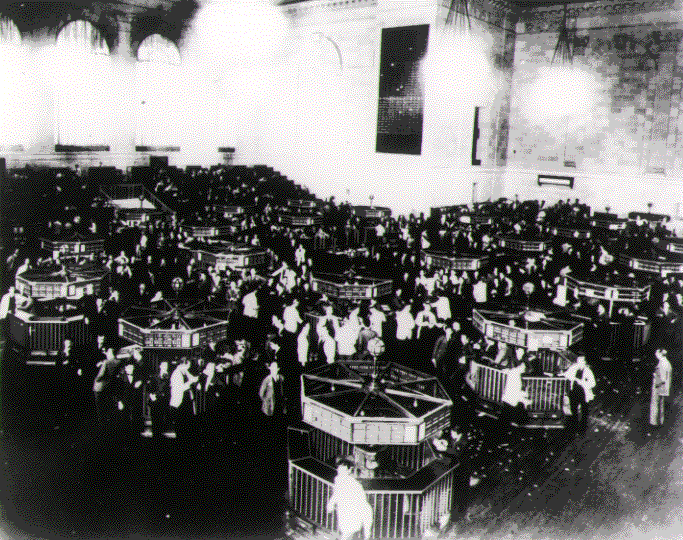*Image Credit: Wikimedia Commons The 1920s had been a wild decade in the United States. In the wake of World War I, it seemed as if the nation found itself with a fresh perspective on life — and it all came crashing down on October 24, 1929. The Dow Jones Industrial Average, after accelerating to new heights year after year, suddenly plummeted, launching the Great Depression. Though the decade would go on to be known as the Roaring Twenties, there was little reason for optimism early in the 1920s. After closing near 120 during November 1919, the Dow was cut in half less than two years later. By 1923, however, the market began a steady uptick and economies grew worldwide. Early in 1925, the Dow recovered fully from the slowdown at the beginning of the decade, buoyed by the growing practice of speculation. Interested in quick gains, investors at all levels pushed more and more money into stocks with the belief prices would rise and they could cash out before taking a loss. Built on a system of trades instead of true financial value, the market resembled a house of cards — and hardly anyone noticed. Trading ended on September 3, 1929 with the value at 381.17, an all-time high. Over the following several weeks, discussion of the Smoot-Hawley Tariff Act in the United States Congress led to a high volume of trades, with the New York Stock Exchange bouncing up and down erratically in an attempt to keep up. The first tremor of the disaster to come struck on October 24th, “Black Thursday,” when the Dow immediately dropped 11 percent. Hoping to stabilize the uncertainty, influential bankers ordered the purchase of large chunks of blue chip stocks like US Steel, borrowing from the strategy which helped slow the massive downturn that occurred during the Panic of 1907. Initially, the move worked: the market rallied to close with only a seven-point loss. When trading opened on Monday, October 28, the Dow was in free fall. Wide media coverage left many with a feeling it was time to get out of the market, resulting in a 38.33-point change from opening to close. The following day, the Rockefellers and other noted wealthy Americans bought up stock to help calm people’s anxiety. Most investors sought to protect their own money instead, generating a record number of trades that would not be exceeded for decades — enough to keep the stock ticker moving hours after the market closed. With in excess of $30 billion lost in just two days, not to mention all that evaporated on Black Thursday, many believed the worst was over. A brief shift in fortunes saw the Dow rebound slightly, but the dominoes had already begun falling worldwide. In July 1932, with unemployment in the United States at an unprecedented 30 percent, the value dropped to 41.22, hitting rock bottom. Economically, the 1930s would be a lost decade for the US, as it took the impetus of World War II to jumpstart American manufacturing once gain. More than 25 years after setting a record in September 1929, the Dow finally closed above 381 again on November 23, 1954. Also On This Day: 1147 – Crusaders under Afonso Henriques recapture Lisbon 1901 – Annie Edson Taylor becomes the first person to go over Niagara Falls in a barrel 1926 – Magician Harry Houdini gives his final performance one week before his death 1954 – United States President Dwight Eisenhower pledges American support to South Vietnam 2003 – The supersonic passenger jet Concorde makes its final commercial flight
October 24 1929 CE – The Great Depression Begins with the “Black Thursday” Crash
*Image Credit: Wikimedia Commons The 1920s had been a wild decade in the United States. In the wake of World War I, it seemed as if the nation found itself…
383
